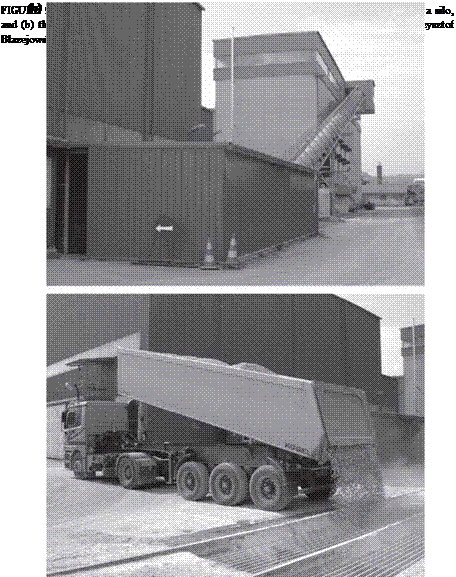The Production of SMA
Having designed and checked the SMA mixture, the time has come to produce it according to the job mix formula (JMF). In this chapter we shall deal with
• Requirements for the organization of an asphalt plant
• Assumptions and control over the SMA production process
• Production of the SMA mixture in a batch plant or in a drum-mix plant
• Storage of manufactured SMA in a silo
9.1 REQUIREMENTS FOR THE ORGANIZATION OF AN ASPHALT MIXING PLANT
The organizational requirements of an asphalt mixing plant and its surroundings are much the same for the production of SMA as for other asphalt mixtures. Some special issues may arise, however, when dealing with SMA, such as the following:
• Storage of aggregates
• Stockpiled aggregate should not be mixed with underlying-soil material.
• Covered aggregate stockpiles may be desirable, especially for the fine aggregate stockpiles; a lower aggregate moisture content improves the plant’s output; aggregates may also be stored in silos, after preliminary drying, but this is still rarely done (see Figure 9.1).
• Storage of stabilizers—covered storerooms may be used; dry storage is especially important when storing loose stabilizers (nongranulated).
Two types of asphalt plants may be singled out with regard to the manner of mixing components—batch plants and drum-mix plants. Batch plants are the most popular in Europe, whereas drum-mix plants may be seen elsewhere in the world. Drum-mix plants can be adapted for SMA production, however, they require some special solutions for batching stabilizers.
The output of a particular asphalt plant should be adjusted to the intended placement efficiency (e. g., the width and thickness of a course, the distance from the work site, and the number of trucks for transportation) in order to organize the SMA laydown so that the stops of the paver are kept to a minimum. Keeping the paver moving forward steadily helps improve the smoothness of the final pavement and limits differential cooling of the mat.
 |
It is easier to produce the SMA mixture in conformity with a job mix formula if the sieves in the screen deck of a batch asphalt plant are properly selected, making control of the mineral mix easier. Improperly selected sieves may results in too wide a hot-bin size range (e. g., 2/10 mm for SMA 0/12.5), which may cause problems with adequately controlling the mix production in accordance with the mix design.






Leave a reply